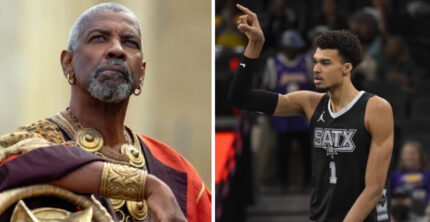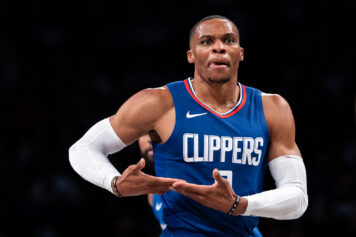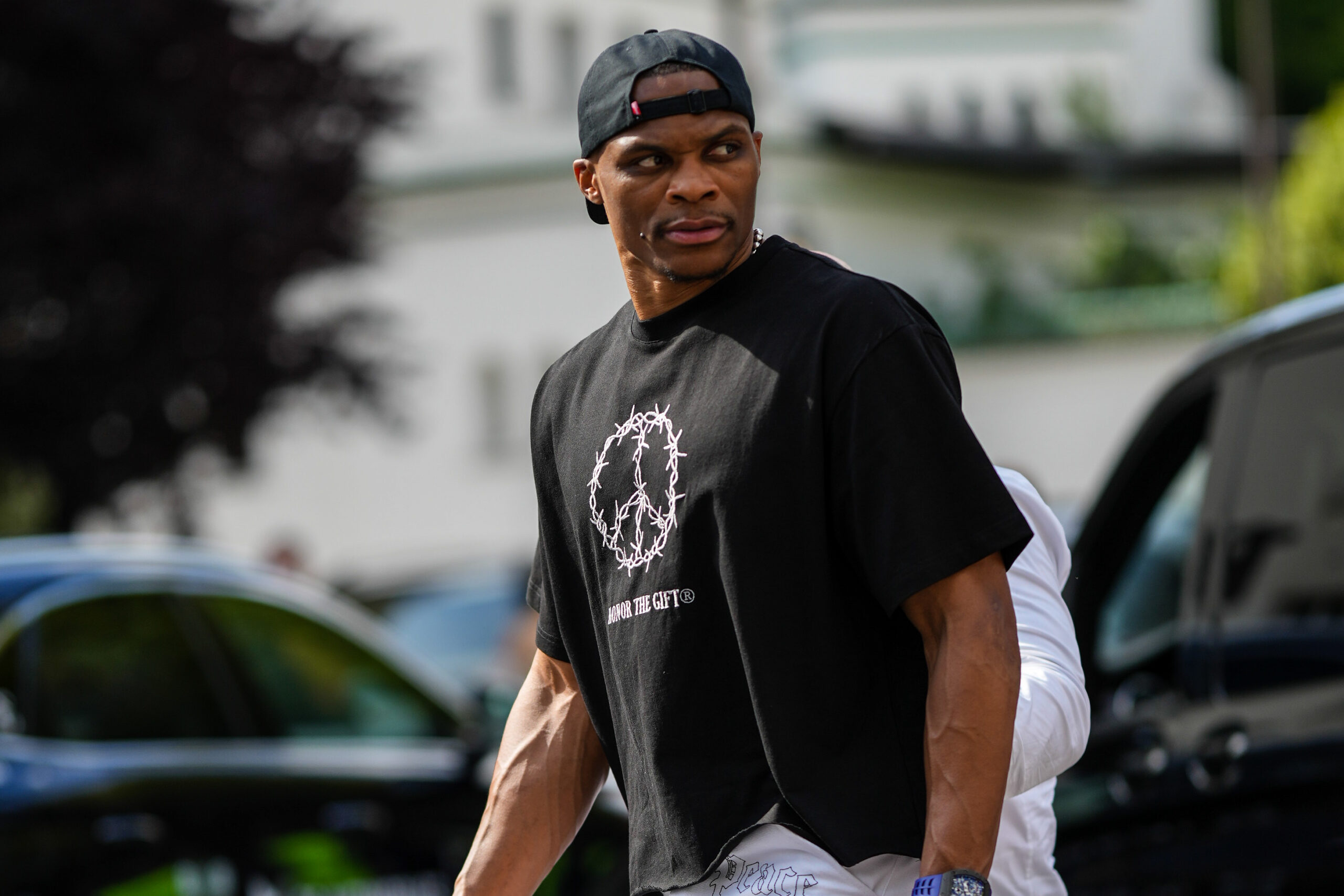Like high tides, great point guards lift all boats and lead franchises safely into port–otherwise known as the NBA playoffs. Subpar floor generals or ones still adjusting to choppy NBA seas inadvertently lead their ships into icebergs. It’s more of a mental position than any other spot on the floor. Ask Stephon Marbury. Because most of these athletes are closer to the median height off the general population, not many play any other position, but as they age, the respected ones are most likely to be groomed on staffs to become eventual head coaches.
Doc Rivers, Mark Jackson, Jason Kidd are the triumvirate of ex-point guards contending for titles as head coaches. If Sam Presti hits the "Eject Passenger" button for ex-journeyman point guard Scott Brooks, former nomadic point guard and national championship winner Kevin Ollie, who played for Brooks in OKC, is considered a dark horse for the job and some industrious general manager should soon tap former Sixers point guard Lionel Hollins to replicate his crystallization of Memphis' soft defense.
Of the group of this season's roster of NBA coaches who also played in the league (including the deposed Maurice Cheeks), 13 were guards, one is a swingman and three were forwards. Raptors head coach Dwane Casey's sneakers were never laced up on NBA courts, but the career coach was a reserve point guard on Kentucky's '78 national championship unit which counts for something.
On the flipside, former centers suffer from the assumption of being less likely to possess the communication skills, basketball IQ and leadership tactics in a role that doesn't allow them to flourish because of their size. Tyronn Lue is Rivers' top assistant, Sam Cassell is the heir apparent to the Wizards job. Meanwhile Kareem Abdul-Jabbar and Patrick Ewing have placed their head coaching resumes on Craiglist’s Jobs Wanted section ad still heard nothing. The Abdul-Jabbar snub is even more painful when you factor in Magic Johnson being given the Lakers head coaching gig shortly after his retirement due to AIDS.
Conversely, Derek Fisher may take the Avery Johnson route to a head coaching gig on Oklahoma City or New York's bench while Ewing remains an eternal head coaching bridesmaid in Charlotte.
Biases aside, basketball IQs are a necessity for the job and its assumed that point guards are the gatekeepers of court strategem. During these playoffs, point guards have pick and rolled their way to the basket and manipulated defenders like origami projects.
The nightly battle royale within a 94×50 steel cage between Chris Paul and Steph Curry is the NBA’s most exhilarating head-to-head clash of the NBA playoffs’ first round. No other matchup has the same viscosity of flair, savviness, artful playmaking and high volume of highlight reel opportunities than Curry vs. Paul. Thursday night’s showdown ended in a controversial decision when Paul got away with a tapping Curry's elbow on a game-tying step-back jumper.
Had Curry gotten to the charity stripe, those two free throws would have been automatic and Curry's barrage of points in the final minute would have been one of the best long range shooting displays of his young career.
Paul slashes opponents with his mind. Paul is the modern successor to Stockton as the king of threading the needle on pick and rolls for easy buckets for teammates, Curry is reigning king of a different realm. His fearsome battle technique is the spherical arrow in his quiver that he fires from impossible angles in parabolic arcs through oval targets hoisted 10 feet above ground level.
Paul anticipates and reads movement with the efficacy of a Doppler radar and throws missiles to open teammates with varying degrees of velocity. Curry is a smooth operator with extraordinary hand-eye coordination and a quick release.
Curry attempted three more stop on a dime, pull up J's per game than any other player across the league and his quick-trigger finger has made him better must-see late night television than Kimmel, Letterman and Fallon.
Then, there are the slashers. Tony Parker has no equal in the Mavericks series besides combo guard Monta Ellis and while Jeff Teague was manhandling George Hill so brutally that Paul George had to pull his bruised point guard away from the scrum. Ellis is always good for six assists a night, but Jose Calderon is the primary ball handler for the thrift shop Mavs roster. Parker is the maestro and the cello virtuoso in San Antonio's Philharmonic.
Meanwhile, the Spurs use a myriad of creative pick and rolls to get their point guard a lane into the paint where he can use his trademark elasticity to twist and contort for a shot moving towards the basket. Parker is the black matter to Curry’s sharpshooting prowess.
Parker – 458 attempts near the rim (8 feet or closer)
Curry – 298 attempts near the rim
Curry 3-pointers – 226/532
Parker 3-pointers – 9/27
Atlanta’s Jeff Teague has had a ton of responsibility heaped on him this season in the aftermath of Josh Smith’s welcome exit and Al Horford’s season-ending shoulder injury, but the rate at which he’s gotten to the rim this season has been astounding. However, he’s benefitted from Pero Antic’s perimeter positioning and Paul Millsap’s stretch-4 capabilities which have left the juicy interior inside 15 feet almost barren most of the time.
It’s not surprising that he’s been blitzing towards the rim like Sherman on Georgia against the Pacers. Fringe All-Stars Ty Lawson, Parker, Monta Ellis and Goran Dragic were more efficient, but Teague was just as prolific on scouting reports. He’ll never be a great shooter however, his relentlessness is unquestionable.
Yet, nobody can teleport through the space-time continuum en route to the rim like Russell Westbrook. When fully healthy, the Thunder point guard is a recidivist rim assailant. Parker is among the league's most lethal basket attackers, however, here's how he compares to Westbrook statistically circa 2013.
Parker – 458 attempts near the rim (8 feet or closer)
Westbrook – 650 attempts near the rim
As savvy as Parker is in Pop's motion offense, Westbrook is a tornado with the ball in his possession. Westbrook is still his old swashbuckling, defiant self, swooping through the lane with no regard for collateral damage to the defense below or his team's offensive chemistry and ball movement.
Out east, the evolution of John Wall is beginning to emerge as the inverse storyline to Indiana’s plummeting championship aspirations.
Wall has cut down on spilling turnovers like BP oil into the Gulf of Mexico and has improved his jump shot. However, the bar was so low that he still has a mountain to climb before he can be considered an elite playmaker.
Wall’s most efficient shot is off the right wing where he’s 45/94 which calculates to a 47 percent clip from three and shooting 40 percent on 203 long twos between 16-24 feet.
Wall shot 50/571 from the right corner and at the top of the arc combined, which is how most great point guards thrive in pick and rolls as it forces defenders to choose when to go over screens. With Wall, the decision is always simple because of his quick first step. Three-point shooting acumen is the one trait that Washingtonians would like Wall to duplicate from the unmentionable long-forgotten Agent Zero. If Wall continues his upward trajectory from behind the arc, he may be an elite point guard in no time.
Outside of Stephen Curry, Damian Lillard is the NBA’s purest shooting point guard of them all. While not quite as cat quick and agile as Tony Parker, or athletic as Wall or Westbrook, Lillard is more even-tempered than Durants’s temperamental sidekick (dodges ball thrown at head by Russ).
Team Tempur-Pedic point guard Mike Conley aka the most slept on point in the playoffs continued to pick up the scoring slack since Rudy Gay was dispatched to Toronto last season. We saw his numbers spike after Gay's trade last season, but he kept it up for an entire season by increasing his scoring to a career-high 17.2 points per game while steadying his assists per game just above his career average with six assists per game.
It wasn't quite the moon leap that Kyle Lowry made from the darling of advanced analytics experts into a more mainstream pool of fringe-All Stars. After the season, Lowry had, the coaches should award him with an All-Star berth as long as he continues his ascension. Lowry and Conley share more than just a subtlety that keeps them off of highlight reels and out of fan consciousness.
Lowry is also benefitting from the infamous Post-"Rudy Gay Trade Bump".
The aforementioned trade of the NBA's most overpaid volume shooter didn't just coincide with Toronto's pillaging of the Atlantic Division. It also put a larger onus to score on Lowery's shoulders.
When Gay was traded on Dec. 9, Lowery was thought to be the next Raptor with a ticket out of Canada. Instead, he increased his scoring average from 13.5 a game through the first month of the season to 18.3 in December.
One year earlier, Conley benefitted from the boost by increasing his scoring average from 12 points a game to approximately 17 a game in the final two and a half months. The post-Gay Conley has kept those averages up throughout this season and it appears that this new edition of Lowery is here to stay in the point guard penthouse as well.
If you've followed Brooklyn's resurrection of 6-7 Shaun Livingston and his insertion into their starting lineup beside Deron Williams, then the Raptors' decision to begin playing 6-6 distributor Greivis Vasquez over Terrance Ross during their opening series sounds like an attempt to neutralize Livingston. However, the decision came down to Ross' inability to score efficiently over the bigger, stronger Joe Johnson. Anybody that says point guards are more athletic than ever has never seen Vasquez play.
After leading the NBA in total assists with the Hornets, Vasquez settled into a backup role with Toronto, but has dealt 22 assists in 26.7 minutes per contest against the Nets.
If Lowry is knocking on the doorstep of stardom, Williams is stumbling drunkenly backwards past the Raptors point guard on the hierarchy. However, the occasional moments of lucidness presents the brilliant point guard Brooklyn shelled $100 million for two years ago and that Kidd hitched his wagon to–in a pair of separate cities. After averaging career-lows since his rookie season in points and assists, Williams has averaged a steady 20/5 in three turn back the clock games against the Dinos.
There’s no formula for the perfect point guard, but the great ones are able to adapt to their surroundings and their surroundings. The center position may have undergone more drastic changes than Al Sharpton’s belt size in the past two decades, however, one position which has remained a constant has been the point guard spot. Faces have changed, but the game remains the same. Point guards come in a plethora of different sizes and diverse skillsets, but the job description for directing professional offenses has never changed. Some just do it better than others.



